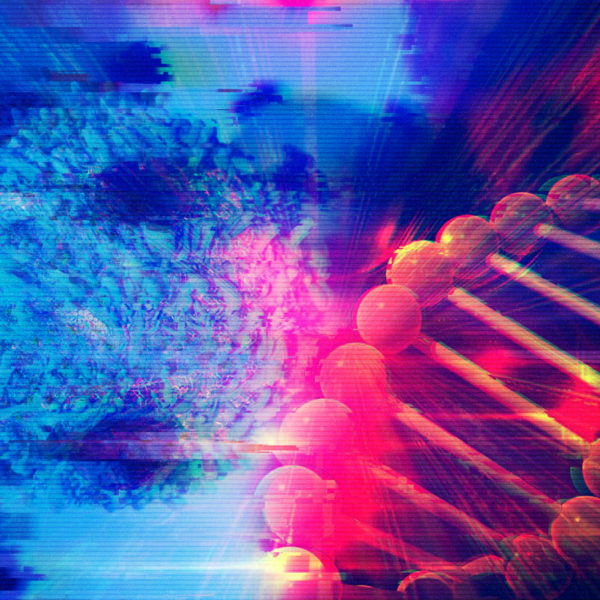Genetic Changes and Cancer
Cancer is a genetic disease—that is, cancer is caused by certain changes to genes that control the way our cells function, especially how they grow and divide.
Genes carry the instructions to make proteins, which do much of the work in our cells. Certain gene changes can cause cells to evade normal growth controls and become cancer. For example, some cancer-causing gene changes increase production of a protein that makes cells grow. Others result in the production of a misshapen, and therefore nonfunctional, form of a protein that normally repairs cellular damage.
Genetic changes that promote cancer can be inherited from our parents if the changes are present in germ cells, which are the reproductive cells of the body (eggs and sperm). Such changes, called germline changes, are found in every cell of the offspring.
Cancer-causing genetic changes can also be acquired during one’s lifetime, as the result of errors that occur as cells divide or from exposure to carcinogenic substances that damage DNA, such as certain chemicals in tobacco smoke, and radiation, such as ultraviolet rays from the sun. Genetic changes that occur after conception are called somatic (or acquired) changes.
There are many different kinds of DNA changes. Some changes affect just one unit of DNA, called a nucleotide. One nucleotide may be replaced by another, or it may be missing entirely. Other changes involve larger stretches of DNA and may include rearrangements, deletions, or duplications of long stretches of DNA.
Sometimes the changes are not in the actual sequence of DNA. For example, the addition or removal of chemical marks, called epigenetic modifications, on DNA can influence whether the gene is “expressed”—that is, whether and how much messenger RNA is produced. (Messenger RNA in turn is translated to produce the proteins encoded by the DNA.)
In general, cancer cells have more genetic changes than normal cells. But each person’s cancer has a unique combination of genetic alterations. Some of these changes may be the result of cancer, rather than the cause. As the cancer continues to grow, additional changes will occur. Even within the same tumor, cancer cells may have different genetic changes.
Hereditary Cancer Syndromes
Inherited genetic mutations play a major role in about 5 to 10 percent of all cancers. Researchers have associated mutations in specific genes with more than 50 hereditary cancer syndromes, which are disorders that may predispose individuals to developing certain cancers.
Genetic tests for hereditary cancer syndromes can tell whether a person from a family that shows signs of such a syndrome has one of these mutations. These tests can also show whether family members without obvious disease have inherited the same mutation as a family member who carries a cancer-associated mutation.
Many experts recommend that genetic testing for cancer risk be considered when someone has a personal or family history that suggests an inherited cancer risk condition, as long as the test results can be adequately interpreted (that is, they can clearly tell whether a specific genetic change is present or absent) and when the results provide information that will help guide a person’s future medical care.
Cancers that are not caused by inherited genetic mutations can sometimes appear to “run in families.” For example, a shared environment or lifestyle, such as tobacco use, can cause similar cancers to develop among family members. However, certain patterns in a family—such as the types of cancer that develop, other non-cancer conditions that are seen, and the ages at which cancer develops—may suggest the presence of a hereditary cancer syndrome.
Even if a cancer-predisposing mutation is present in a family, not everyone who inherits the mutation will necessarily develop cancer.
Here are examples of genes that can play a role in hereditary cancer syndromes.
- The most commonly mutated gene in all cancers is TP53, which produces a protein that suppresses the growth of tumors. In addition, germline mutations in this gene can cause Li-Fraumeni syndrome, a rare, inherited disorder that leads to a higher risk of developing certain cancers.
- Inherited mutations in the BRCA1 and BRCA2 genes are associated with hereditary breast and ovarian cancer syndrome, which is a disorder marked by an increased lifetime risk of breast and ovarian cancers in women. Several other cancers have been associated with this syndrome, including pancreatic and prostate cancers, as well as male breast cancer.
- Another gene that produces a protein that suppresses the growth of tumors is PTEN. Mutations in this gene are associated with Cowden syndrome, an inherited disorder that increases the risk of breast, thyroid, endometrial, and other types of cancer.
For more genes that can play a role in hereditary cancer syndromes, see Genetic Testing for Inherited Cancer Susceptibility Syndromes.
Genetic Tests for Hereditary Cancer Syndromes
Lab tests called DNA sequencing tests can “read” DNA. By comparing the sequence of DNA in cancer cells with that in normal cells, such as blood or saliva, scientists can identify genetic changes in cancer cells that may be driving the growth of an individual’s cancer. This information may help doctors sort out which therapies might work best against a particular tumor. For more information, see Biomarker Testing for Cancer Treatment.
Tumor DNA sequencing can also reveal the presence of inherited mutations. Indeed, in some cases, the genetic testing of tumors has shown that a patient’s cancer could be associated with a hereditary cancer syndrome that the family was not aware of.
As with testing for specific mutations in hereditary cancer syndromes, clinical DNA sequencing has implications that patients need to consider. For example, they may learn incidentally about the presence of inherited mutations that may cause other diseases, in them or in their family members.
Share this:


